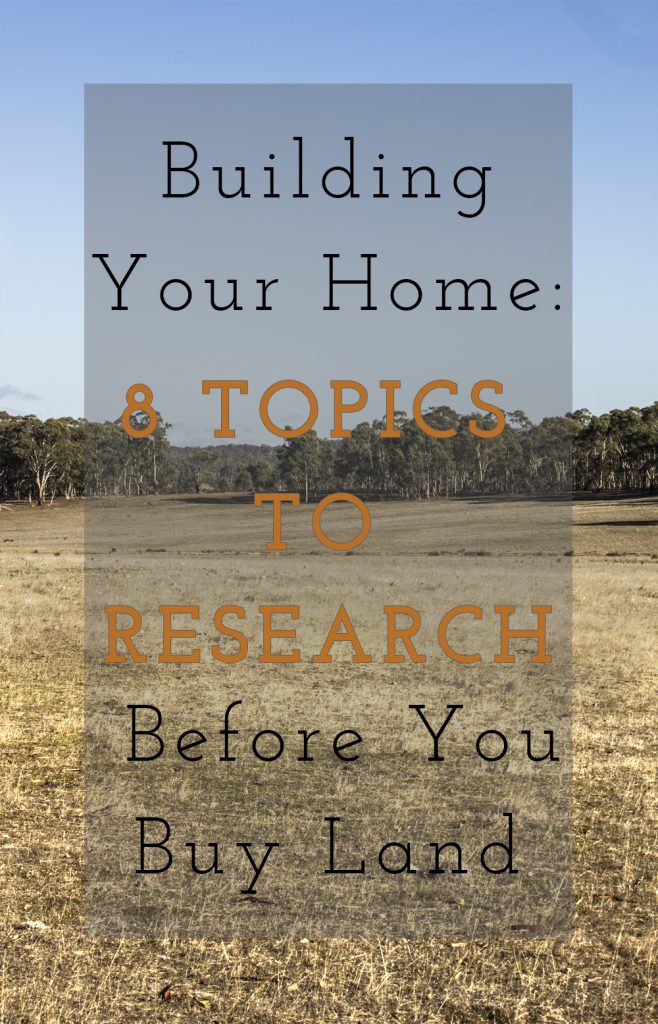Before you begin Buying Land
Buying a block of land is one decision you need to make carefully; there are many things that need to be taken into consideration. Doing your research prior to purchase will allow you to plan for many of the expenses that will impact on your project and ensure you allow for these in your budget.
There will always be some unforeseen expenses of course, so it’s about minimising these. If your purchase is made with your homework done, knowing what work and associated costs are required, you will be in a far better position to build your home without the added stress that a great deal of costly unforeseen expenses can incur.
This post will cover many of the things you should consider and cost or research before making that final decision to sign for your land on the dotted line…..
1. Make your decision to purchase with your eyes open and do your homework
It’s easy to get lost in beautiful views or the perfect location and not take the time to research some of the other essential characteristics of the property. There will always be some things that you will discover along the way that require extra cost or consideration, as each property has its individual challenges and unique features.
Understanding that there will be compromises is vital; you should consider carefully the property you love. When you understand that everything which has to be done to work with the property, will most likely have an associated cost, the importance of doing your homework on the property and the math’s on the outcomes of your research becomes obvious.
The more areas that require spending due to the site, the bigger the impact will be on the money you have left for the building of your house.
Over the years, we have seen many clients come to us with a very small budget left for the building of their home, because of the extra costs associated with the property they have purchased. It is common for people to spend more on their land than their budget allows.
For example, spending $300,000 on a property then finding the costs required outside or prior to the build will be a further $80,000 for items such as tanks or water connection, site cut, drive, power connection and/or Solar systems, waste treatment or sewer connections and possible extra costs due to overlays may not leave enough funds to build.
For example, if you have a total budget of $550,000, in this example, once the above expenses have been paid for, the amount left will only be $170,000 for the actual building of a new home, severely restricting what is achievable.
The best way to avoid costly surprises when considering buying land, is by knowing what to look for, in addition to the areas we will cover here, you need to ask yourself – specifically in relation to the land you are considering–
“What could be extra costs associated with this property?” It is also worthwhile having your builder look at the land you are considering, prior to your purchase.
2. Town planning and Overlays
What are the local regulations and is what you propose to build allowed?
There will be setbacks from fence lines that need to be considered for both town planning and building codes, and these may vary, so make sure you are aware of them both if you are wanting to build close to a boundary.
Ensure you get the correct information! Information can vary between town planners, so it is best to get answers to your questions in writing if possible, unless it is documented in the planning scheme. Every shire or council has it’s own planning scheme – you can look up the one pertinent to your land here.
Overlays can have a major impact on where, what and if you can build on a property, they can also influence the costs associated with it. For this reason they should be one of the first things you should factor into your decision on whether or not to buy a property, as they can be some of the most costly to comply with.
You should start by calling the Town Planning department of the local shire you’re looking to buy in, and discuss the overlays on the land you are considering. You can also search these things yourself on Land Data, for Victoria, our Land Data property search site is the Department of Environment, Land, Water and Planning (DELWP).
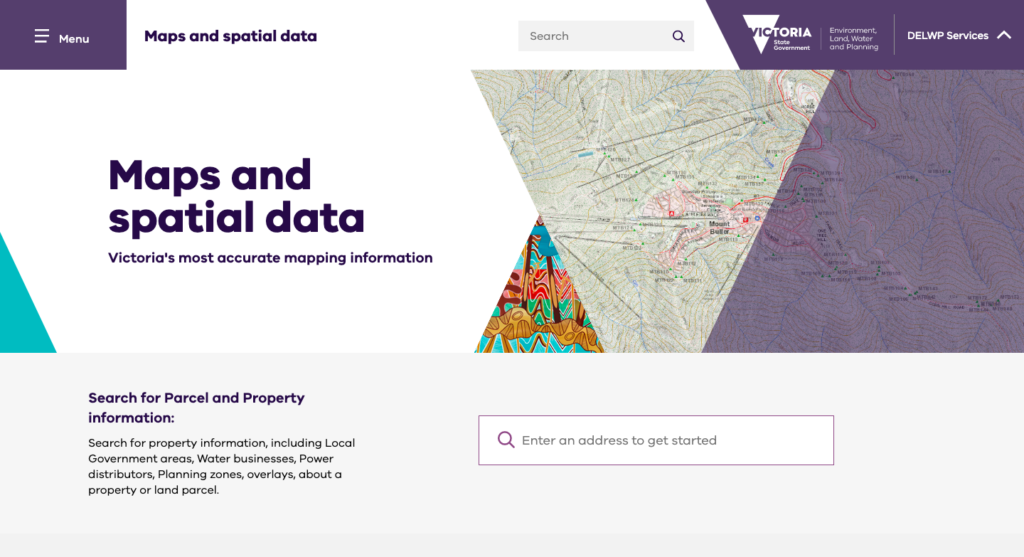
This site has many useful links and explanations, where you easily put the address of the property you are considering purchasing, and get a free planning property report. These reports will tell you the zoning of the land and the overlays pertaining to the property. When you search your property address, there is also a summary of important information, including; zones, overlays and utility information.
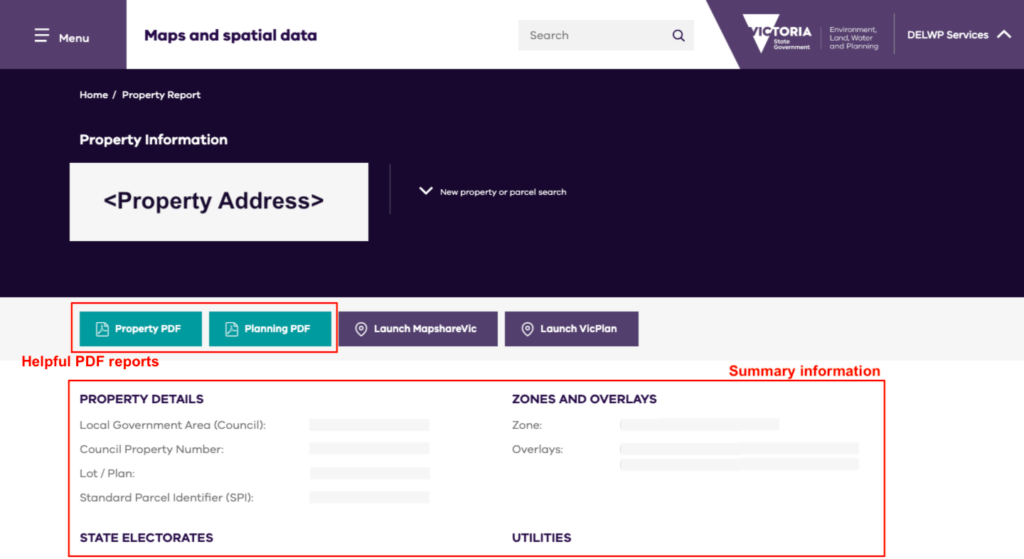
Zones such as farming, rural living, township, environmental rural etc. will impact on what you can use the land for, the setbacks your property may have, reports required, ability to remove trees to maintain a defendable space and so on.
Overlays relating to the land can have impacts on the cost of your build, as well as requiring specialised professional reports. It’s important to research the impacts of the overlays pertaining to the site (check your property report carefully and then read the information about the relevant overlays so you understand them and are sure of how they might affect your build.
Some possible overlays are:
- Environmental Significance Overlay (ESO)
- Bushfire Prone Area: Each Bushfire Attack Level (BAL) rating has different requirements.
- Bushfire Management Overlay. (BMO or WMO)
- Flood or Land subject to Inundation Overlay (LSIO)
- Erosion Management overlay (EMO)
- Heritage Overlay
- Aboriginal Cultural Heritage Overlay: if the land is in a significant Aboriginal area a report may be required and we have heard of these costing $40,000. Your local town planner will be able to advise you if this pertains to the land you are considering.
In summary – ensure the land is able to be built on and either that it has town planning issued already, does not require it, or that you know what the town planning requirements are and that these are achievable for both Planning zones and overlays.
We will be covering the Town Planning process in a lot more detail later in this blog series.
3. Easements, Covenants or restrictions.
Are there any easements or covenants affecting the property? You will need to carefully study the title and plan of the property to know if any easements, covenants or restrictions affect the property. These should be attached to the section 32.
We have experienced people who have purchased land and then found out they couldn’t build with Rammed Earth, which was their preference, due to a covenant placed on the land by a developer. So it is important to establish if there are any that apply to your land and if they are going to affect what you want to do.
If you have an easement it, may be a burden or a benefit to you over a neighbour’s property. If there are easements find out if there are any setbacks from these and if they restrict what you can do on the land. Generally you are not able to build over an easement.
You may require an easement on an adjacent property for achieving drainage or legal point of discharge; in this case it is essential to find out if the owner will agree to this, and to get an agreement signed. If they don’t agree you need to know your options and what costs may be associated with these. Meeting the local infrastructure department onsite is usually required and possibly a plumber to give an idea of costs.
4. The slope of the property
While no property is likely to be completely flat, there can sometimes be considerable extra cost’s associated with building on a slope. Site cut and site works such as retaining walls could be required, as could design elements such as split levelling or a two storey construction for example.
Whilst working with the land to design your new home is the best way to proceed as it will add both interest and character to your new home, accounting for extra expense will be required when working with a sloping site.
5. Rock
Although many properties have rock of some sort, it is worth finding out what is in the local area, e.g. if the rock is generally large or small, and the type of stone and rock often found. Some types of rock are easy to excavate, whilst others can add considerably to the site works cost, as well as being an extra allowable expense for your build.
Builders are not able to estimate how much rock there will be under the ground where excavation is occurring, which can incur higher costs as well as requiring more concrete for the footings. When large rocks are excavated from footings during the dig they leave uneven larger areas to fill with concrete.
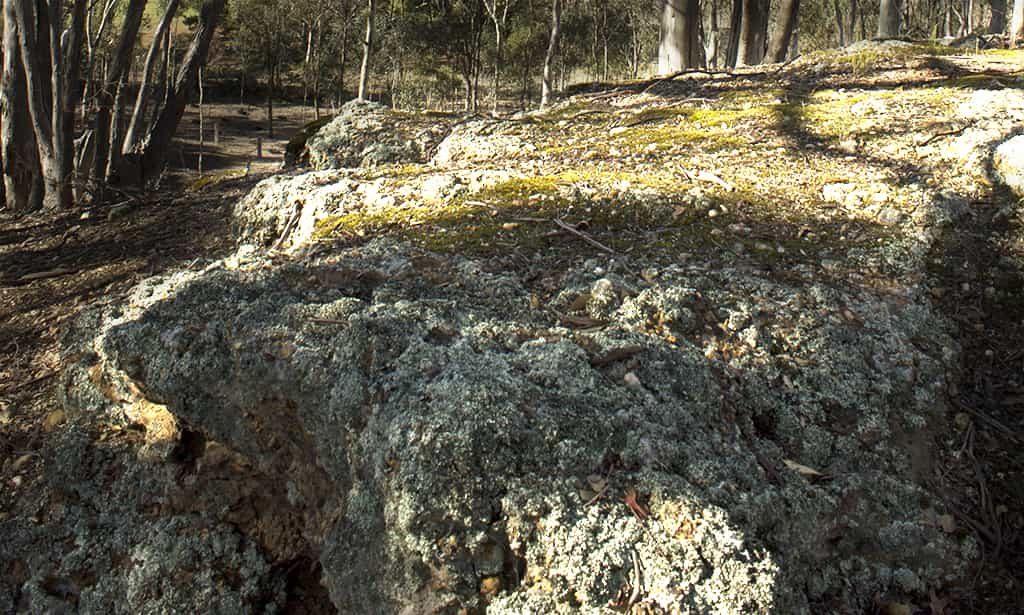
6. What direction is the property facing?
Very often we have clients call and they have purchased their land, when we ask them which direction they are expecting their house to face, we are told west or east due to views…. To achieve a solar passive design the house needs to have its main direction to face North with good crossflow to the South.
If the views you love are on the west, you need to consider and find out if it is possible to capture these and still have a solar passive design. This often adds character and interest to the design but can be more complex, which will add to the build costs.
7. Services and infrastructure – Power, Water, Sewer, Drainage, Access and Fencing.
If you property is in a township area you will most likely have minimal connection fees to many services, however we have heard of clients who have had up to $12,000 to connect to power that is in the street, due to extra infrastructure required, or a sewer main extension to the land purchased is needed and so on.
On your property report from Land data the local water authority will be listed as well as the Power distributor that covers the land in question.
Some things to consider when it comes to infrastructure before purchasing land are:
- Power:
How far away is the power supply? Not only to your property boundary but to where you intend to build on the land. Our own home is 150meters from our boundary supply point. The further in you go the larger underground electrical mains cable you may need due to voltage drop over distance.
Find out what the costs would be to provide power to the property by contacting the power distributor in the area, this is NOT the energy retailer! Providers are different for different areas around the state. They can give you a budget estimate free of charge.
If you are on acreage, it may be worth getting an electrician to quote the underground mains cable from the pit to your proposed house site. Alternatively they may be able to give you a lineal meter charge for the distance you need to go to get to the proposed house site.
Are you planning on installing solar panels as well as grid power connection with reverse grid feeding? OR using only alternative energy produced on site and not connecting to the grid?
Will you be storing your own power via batteries?
These things will determine if you need to connect to mains power.
Connection fees can be anywhere from $0 to very expensive in the $10’s of thousands, so it’s essential to know what you require and estimates of costs for the particular property.
- Gas:
Is mains gas or available or LPG (bottle only)? This will affect your choices in relation to heating and possibly hot water backup systems. The jetting of gas cooktops will need to be done according to the supply.
- Water:
Do you have access to town water? Is the water main close or under the road requiring an under road bore?
Do you need or want a rain water tank? You will need to research the storage requirements for your usage, as well as the local rainfall averages for your area and catchment for your proposed build.
There is no point putting in a very large tank that you will never fill due to usage and the roof area or catchment.
- Legal Point of Discharge and access:
You can meet someone from the local council infrastructure onsite to discuss the drainage from your property – or Legal Point of discharge. If this is up hill from your house site or paving areas, this may require an absorption pit, pumping or retention system incorporated in a rainwater storage tank and overflow directed to the council nominated Legal Point of discharge.
One project we completed in a town area had a plumbing Legal point of discharge cost of $11,500 plus the engineering for this, which is quite a substantial expense for something that wasn’t factored into the client’s costs at property purchase.
The road/drive access can also be discussed with the council or Vic Roads as to what is required, if this is not already in place. You may need a bitumen crossover and culvert with end stops. In an area out of town where a long drive is needed it is worth getting a quote from a local contractor of the expense including machinery work and gravel to construct your drive.
- Sewer/waste treatment:
Is the property in a sewered area? Does it require a mains extension? You can contact your local water authority and get a quote for connection to both sewer and water; they will let you know where your access point is.
If you are buying a property where you need to treat your own waste water, it is worth contacting the local Environmental Health Officer at the council to find out what is required on the site, they may allow a standard septic or you may need a waste treatment system.
Sometimes a Land Capability assessment is also needed. This will determine the trench length/area and the type of system allowed. You will need a permit to install the system, prior to getting your building permit. The area for the effluent evaporation trenches sometimes has a determining factor on where the house and driveway can be placed. Water catchment areas, damns etc. also need to be considered in relation to regulations and setbacks.
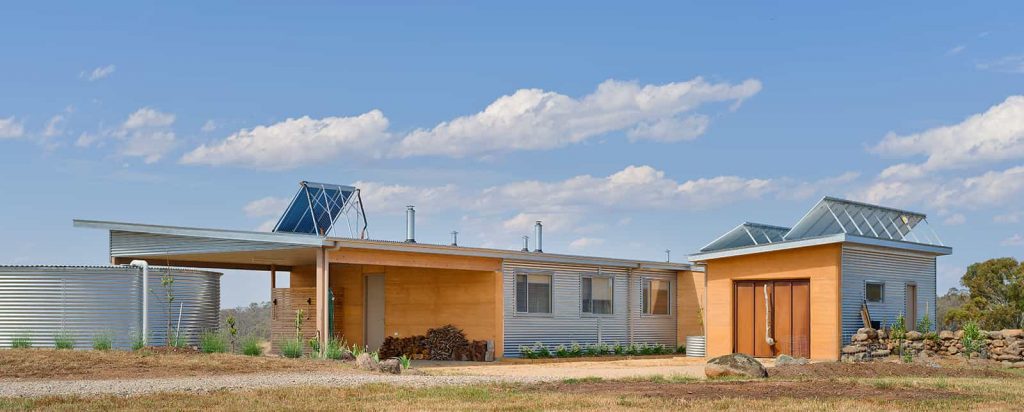
- Telecommunications/Phone & Internet:
It is worth ensuring phone and internet services are available. For example, you may be in an area that has very poor mobile service. If this is essential for your work/living, it may influence your decision.
Some areas have a wait for connected internet services, and others can be costly to set up your wired phone connection.
- Fencing:
Does your property already have a fence, or will you need to be constructing one? Even if you don’t require a fence but your neighbour does you will need to pay for half under the fencing act.
8. Last but not least, before you buy land – research the area!
You may go looking for property in the summer holidays when you have time off work, or in spring when everything is beautiful and blooming, but keep in mind that while everything may seem beautiful at one time of the year, it can be different at another.
Research the area you’re planning on moving to, and find out how cold it gets in winter, how hot in summer, what the average rainfall is etc. This is especially relevant when you are moving to a different district.
You might be moving from the city to the country for a tree change, and a quiet remote area might be exactly what you’re looking for, however positives and negatives for you personally should be considered.
How far is the nearest hospital or doctor?
How long will it take to get to a supermarket to buy your weekly groceries?
If you want to be more self-sufficient and grow your own food, you’ll need to find out what the local soil and weather is like for growing.
Generally this is not insurmountable but when you move, as we did, from the Dandenong Ranges to an area such as Castlemaine, you go from lush loamy topsoil, to clay and rock – every hole is dug with a crowbar close by and vegetable gardens must have the soil built up to be successful, however we have more sunny days and a longer growing season.
Will you need to cost a dam to provide water for the garden/orchard you are planning?
Travel distance from work and services can make a block further out time and cost prohibitive – even though it may be cheaper initially this may not be sustainable in the long run. If you have a family consider as they grow going to after school events, classes or even just visiting friends. The distance can be multiplied by several times each day at times.
So what should you do when considering buying land?
- Go into the process with your eyes open.
- Understand what is required to get town planning permission to build on the land in question.
- Understand if/how slope of the property could affect your build costs.
- Consider rock and its effect on the costs.
- Look at the way the property is facing and factor in design/build costs that you might incur to capture those views. Is it facing north?
- Are there easements, or do you require them?
- Cost the availability and provision of services required such as roads, driveway, power, water, gas, sewer, communication (internet and phone) and fencing requirements.
- Research the area.
We’d love to hear from YOU!
This blog post on purchasing land includes many of the things we have learnt over the years from our clients and our own research and experience.
There will undoubtedly be more to add to this list each time we learn from new experiences, and we plan to share these with you so you can benefit from our experiences.
